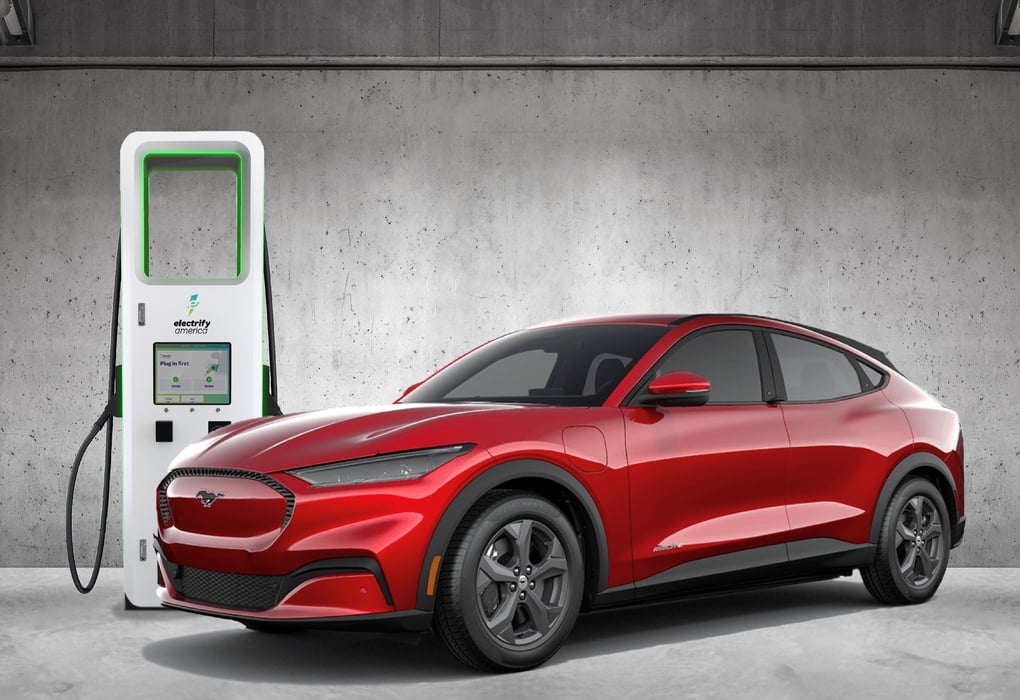Wow! Has it been a year for electric vehicles. I'm talking about pure, all-electric vehicles - not hybrids or plug-ins. Tesla is no longer the only buzzed about EV maker and we're no longer talking about a few high-profile EV models like the Model S, Chevy Bolt, Nissan LEAF, BMW i3, all early pioneers of the technology to be sure. '
Things are changing now and they're changing fast as more automakers join the EV movement and public interest in electric vehicles grows. These days, the Porsche Taycan is in the spotlight when it comes to all-electric sports sedans. In fact, it's the number one selling large luxury sedan in the U.S. through the second quarter.
Ford is going all-in with the all-electric Mustang Mach-E, you can check out my test drive above, and first-ever all-electric Ford F-150 Lightning pickup due out next summer. I was also very impressed with the new Volkswagen ID.4 all-electric crossover I test drove earlier this year.
Volvo will soon roll out its first dedicated EV the Volvo C40. For Kia the all-electric EV6 crossover is on tap. A Bolt EUV recently joined Chevrolet's lineup. New luxury EV maker Lucid Motors, which just went public, is coming out with its first all-electric luxury sedan by year's end.
The list could go on and on and it's easy to see why. Demand is increasing as gas prices rise, fears about range anxiety begin to subside and the charging infrastructure grows. With that in mind, here is an updated guide with a few things to keep in mind about electrified vehicles and what to currently expect from them.
Don't confuse electrics with hybrids.
Electrification is a broad term that these days encompasses several types of vehicles: All-electric cars, (sometimes called pure electrics), hybrids and plug-in hybrids. All-electrics like the Taycan or VW ID.4 run strictly on battery power. Needless to say with all-electrics you need never visit the gas station. Hybrids, like the new hybrid-only 2021 Toyota Sienna, have gasoline engines to assist the batteries or to take over completely when the battery power is depleted. They can be good alternative to electrics if you drive more than the battery range of the vehicle you are considering. A Plug-In Hybrid is a hybrid vehicle you can also plug-in to an outlet to help charge the battery. The new Jeep Wrangler 4xe is one new example, but there are many others.
Know the warranty on the car and the batteries.
In every case I know of, the battery warranty is longer than the warranty on the rest of the vehicle. Here are some current, as of this writing, examples. The Porsche Taycan has a battery and electric powertrain warranty of 8 years or 100,000 miles whichever comes first. Tesla now warrants its batteries for 8 years with various mileage limits depending on the model and battery size. BMW also warrants its batteries for 8-year or 100,000-miles. The 2021 Nissan Leaf has 60-month/60,000-mile powertrain and electric vehicle system coverage with 96-month/100,000-mile Lithium-Ion Battery coverage. Hyundai offers a 10-year, 100,000 hybrid powertrain component warranty. (Its lifetime battery warranty applies to model year 2017-2019 vehicles.) Make sure to ask the length of time and mileage limits of the battery warranty as well as the rest of the vehicle.
Bottom line: Battery warranties are typically longer than new vehicle warranties, but they range across the industry, so it's critical to check with each manufacturer to see what they offer.
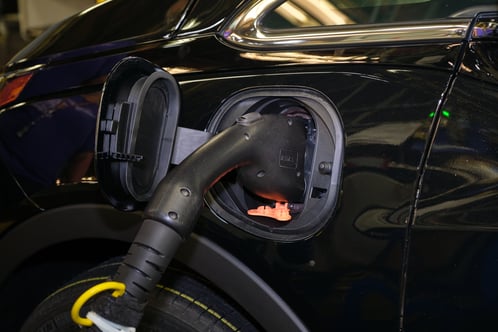
A 2022 Chevrolet Bolt EV is connected to a DC fast charger during the final stage of production on Thursday, May 6, 2021, at the General Motors Orion Assembly Plant in Orion Township, Michigan. (Photo by Steve Fecht for Chevrolet)
Compare the size of the battery.
I don't mean the physical size of the battery, although generally the larger size of the battery can affect the weight of the vehicle and take away trunk space. What you really want to look at is the power of the battery, which is measured in kilowatt-hours, which is abbreviated kWh. When doing your research, know that the larger the kilowatt-hours, the more range the vehicle will have. For example the new all-electric Ford-F150 Lightning will have two battery options: a standard 230-mile range (onboard power charger 11.3 kW input/10.5 kW output) and a 300-mile extended range (onboard power charger 19.2 kW input/17.6 kW output).
 Source: Ford.
Source: Ford.
Bottom line: The bigger the battery size in kilo-watt hours, the more range you get. Larger optional extended batteries typically add cost or are available on higher trim models.
How do I charge my electric car?
There are three levels of charging: Level 1, 2 and 3. Most electric cars will charge from a standard 110-volt outlet (Level 1), either outside or inside a building. Just know that it will take longer to charge from a standard outlet. Most automakers offer optional, more powerful and quicker chargers that run on 240-volt (Level 2) power. Level 3 is also called DC Fast Charging and is the quickest way to charge.
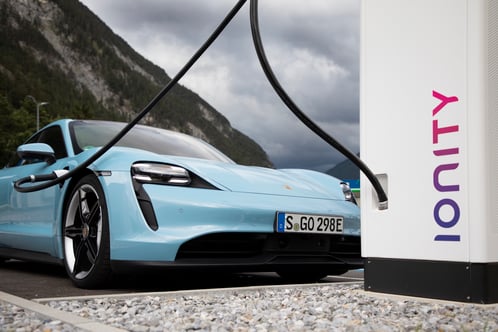
According to a recent Forbes article, here's a breakdown of charging level and times:
- Level 1: 3-5 miles an hour.
- Level 2: 12-80 miles an hour.
- Level 3: 3-20 miles a MINUTE.
For some specific examples, BMW says the 2021 i3 can now be fully charged in under 6 hours when using 240V Level 2 charging offered with its $1,250 home-use BMW WallBox. (For 240-volt home charging systems, you'll typically pay for the charging unit as well for installation.) The Hyundai Ioniq electric can charge Level 1 in 35 hours 30 minutes or Level 2 cuts that down to 2 hours 15 minutes. It also offers Level 3 with 80 percent of a charge achieved in 54 minutes (100kW)
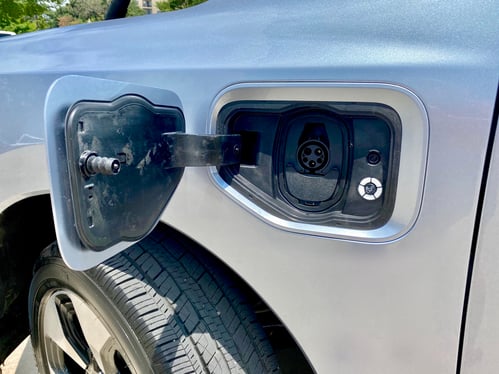
2022 Ford F-150 Lightning Prototype.
By far the fastest charging out there now is what is called DC Fast Charging. For example, using 400-V 150kW DC fast-charging, you can charge the F-150 Lightning extended range battery up to 54 miles of range in 10 minutes. You'll get 41 miles for the standard battery.
The quickest charging available is with a 800-volt 350kW charging system, like the system introduced by Porsche for the Taycan. Porsche says the system can charge the Taycan from five to 80 precent in 22.5 minutes. Electrify America offers 800-volt charging. For Tesla owners, Level 3 means Tesla Supercharging, available to Tesla owners only.
Bottom line: There is a lot to know about charging levels and it's important to know what charging capabilities your vehicle comes standard with and what other charging options may be available. Charging varies by model, battery size, AMP charging systems, and the type of Level charging.
Consider the Federal Tax Credit when looking at the cost of an electric car.
The government offers electric car buyers a $7500 tax credit. This is not a rebate that comes to you and it does not come in the form of a check. Ask your CPA how it might affect you, but generally speaking, if you owe money when you figure your taxes, this can be a big help. Some individual states also offer incentives. Note: The $7500 federal tax credit is limited the first 200,000 buyers of a specific electric car, then the amount goes down, so be sure to ask. Beware that if you lease an electric car, odds are the lease company is using the tax credit to lower the monthly lease payments. Remember, the lease company is the owner of the car, not you, and as such gets the tax credit.
Bottom line: Not all electric vehicles qualify for the same federal tax incentives. It depends on the number of EVs sold by that manufacturer.
Beware of range anxiety.
There is a certain uneasiness with electric cars in the beginning. That is changing somewhat with better battery technology that allows for longer ranges. Some vehicles now surpass the 300+ mile range mark. They are the generally the pricier trim models with larger battery sizes. Other vehicles like the upcoming Lucid Air tout a 500+ mile range for the top model. You learn quickly how to use your gauges to plan your trips and when to charge. Know that running accessories can shorten your range and extreme hot and cold temperatures can as well. If you are concerned about running out of power, a hybrid may be a better choice for you. Most electric cars will show you on the navigation system where charging stations are, and many are free but have time limits. There are also phone apps that will let you know where charging stations are. Some automakers are offer some free charging. It varies so do you your homework. One example of a nationwide charging network is Electrify America. Charging prices vary by location.
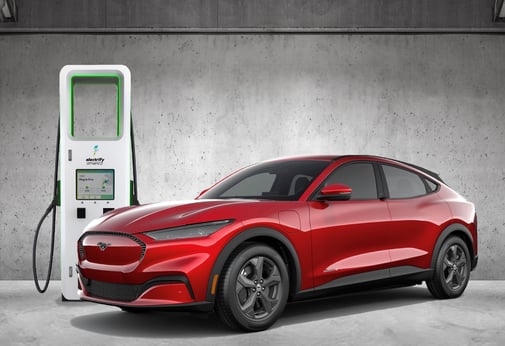
Ford Mustang Mach-E owners will receive 250 kilowatt-hours of complimentary charging through FordPass Rewards at Electrify America fast-charging stations. Credit: Ford.
Bottom line: Range across the industry is improving all the time but varies between models and battery sizes.
Electricity cost should be calculated in to the cost of ownership.
Although you don't have to purchase gas, the electricity to charge your electric car comes at a cost. First, you have to know the kWh for your electric provider. As of May, the national residential electricity rate was 13.76 cents per kilowatt-hour (kWh) according to the U.S. Energy Information Administration (EIA). But local costs depend on where you live.
In one example from the EPA's fuel economy website, it cost $650 a year to power the Mustang Mach-E RWD, at a cost of $1.10 per 25 miles, a number based on a number of factors. The Porsche Taycan currently has the highest annual fuel cost at $950 a year. However, there are other EV's as low as $450. You can see the EPA's complete list of EV's and estimated annual fuel prices here.
Automakers are also offering ways to find out when it's cheapest to charge. For example, with FordPass you can manage and schedule charging at non-peak hours straight from your smartphone.
Bottom line: Just like gasoline, you'll need to pay for electricity to fuel up your electric vehicle either at home or at a public station. Rates vary by location and you can choose to do so at non-peak times that can help with your electricity bill. The EPA estimates annual fuel costs from $450-$950 a year depending on the model.
In Conclusion
Electric cars are not for everyone. You can drive them cross-country, but it will be a long trip. The perfect scenario for electric car ownership is people who drive from home to work and back and can do that within the range of battery with no additional charging. If that scenario works for you, you will never go to a gas station again.
Editors note: This article was updated on November 14, 2021, to clarify the Ford F-Lightning battery pack onboard charger power information.
Photo Credit: Ford.
